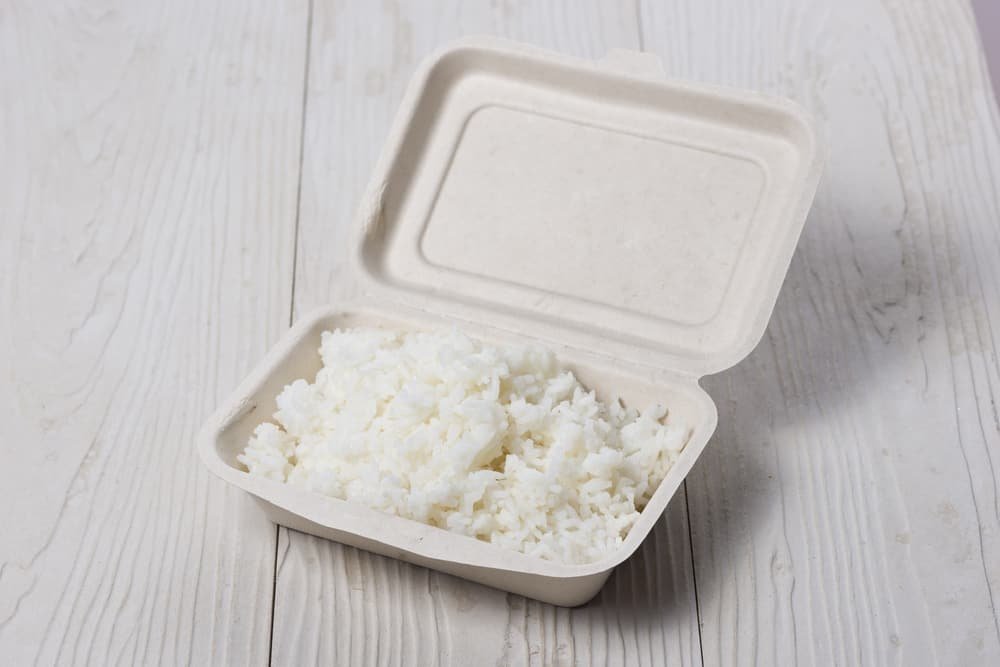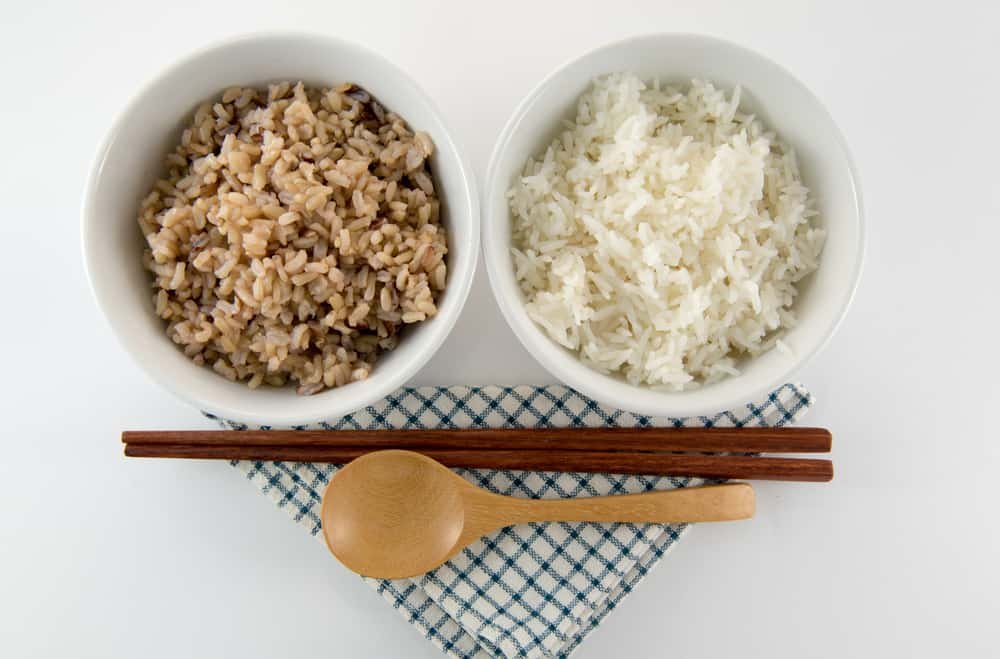
If your mealtimes are all complete with a generous serving of rice, you might be wondering if you’re consuming too much “junk food”. While some people strongly see rice as a poor diet choice, there are those that see its value. What I would like to know is whether or not rice is junk food in reality – so I set out to find out.
Rice is not junk food. Rice is a staple food source that has a decent nutrient profile. With that being said, rice can, of course, be included in certain junk food meals and treats, but the grain itself is not actually a junk food at all.
Does that mean that rice is a heaven-sent food that can do no wrong? It doesn’t actually mean that at all. Unfortunately, like all food types, it really depends on how the rice is prepared. If you would like to find out more about the actual nutrient profile of rice and why it can’t be classified as junk food, read on.
Rice Is Not A Junk Food, So What Is It?
I knew that rice wasn’t a junk food, so I wanted to do a bit more digging to find out what rice is, if it isn’t junk food. That I found was a hard one to find the answer to. It’s a grain – we know that, but it’s also a nutritional and staple food source. How did I come to this particular conclusion? Let me explain…
Definition of Junk Food
One of the first things that I did when I started my research into rice was to Google the definition of “junk food”, and I came across two definitions that I would like to share with you.
The first is from the Oxford English Dictionary online (Lexico), which defines junk food as follows:
“Pre-prepared or packaged food that has low nutritional value”.
Lexico – Powered by Oxford
The second is from Wikipedia, which defines junk food as follows:
“Junk food is unhealthful food that is high in calories from sugar or fat, with little dietary fiber, protein, vitamins, minerals, or other important forms of nutritional value”.
Wikipedia – Junk Food

Rice is …
As you can see, rice doesn’t really fit into either of these definitions. Rice is a healthy food source with moderate calories and a decent nutrition profile. Let’s take, for instance a cup of cooked long-grain brown rice, which has the following nutrition profile: (RDI means Recommended Daily Intake)
- Calories: 216
- Carbs: 44 g
- Fiber: 3.5 g
- Fat: 1.8 g
- Protein: 5 g
- Thiamin (B1): 12% (RDI)
- Niacin (B3): 15% (RDI)
- Pyridoxine (B6): 14% (RDI)
- Pantothenic acid (B5): 6% (RDI)
- Iron: 5% (RDI)
- Magnesium: 21% (RDI)
- Phosphorus: 16% (RDI)
- Zinc: 8% (RDI)
- Copper: 10% (RDI)
- Manganese: (RDI)
- Selenium: (RDI)
The above nutritional information was taken from Healthline (Is Brown Rice Good For You?)
Just from looking at this list, you can see that rice is a great source of plant protein as well as iron! All of the other nutrients are also essential to a healthy diet and can contribute to a balanced, healthy diet.
As it turns out, rice is not the bad guy…it can be the good guy. If you do a bit of research online about it, you will discover that rice, especially white rice, is quite easy to digest – this is perfect for people who are recovering from being sick. Rice is low in cholesterol as well as fat and considerably high in starch. For vegans and vegetarians looking to boost their plant-based protein intake, a serving of rice per day is recommended.
Everything in Moderation – Including Rice

There are many dishes that are served to perfection with rice. Think of curry and rice or stir-fry with rice. The thing about rice is that you have to learn to eat it in moderation. If you eat rice in excess, it can become fattening. Have you ever heard the saying “everything in moderation”? That is best applied to the situation when eating rice.
According to the definition of junk food, the reason people like to try and avoid such foods is because they are typically high in calories as well as sugar and fat. On face value, they look great and taste great, but they just lack the important and necessary nutrients required by the body, such as fiber, vitamins, and minerals. Overindulging in such food will only mean bad things for your weight and overall health.
When it comes to diabetes, obesity, and heart disease; junk food is one of the main contributors. Another thing of key interest when it comes to junk food is that the contents thereof (sugar, carbs, fat) are highly addictive to human brains and bodies.
Much of my research kept uncovering the same facts over and over… junk food is bad for you. It’s bad because it causes fatigue, it offers minimum nutrition, can cause digestion complications, can lead to flatulence and heartburn, can affect brain function, increase your risk of various diseases such as kidney disease, heart disease, diabetes, and certain cancers.
When Rice Can Transform Into Junk Food
If you started reading this article and thought “phew, now I can go forth and eat anything with rice in it guilt-free”, think again. Rice is not always good for you!
Let’s be realistic; just because rice in its natural form is not junk food, it doesn’t mean that it can’t be junk food when prepared in a specific way or added to certain meals. Think of sugary, high-fat rice crispy bars. Those aren’t particularly healthy. Think of egg-fried rice in its oily form served up from a take-out store. Have that for dinner every night, and you will quickly figure out that rice can be a junk food. The same goes for very sugary cereals made from rice.
It’s only logical to think about each meal and snack that you eat and consider the calorie content as well as the nutrients included. If there are no nutritional ingredients, empty calories will just make you fat and unhealthy.
Brown Rice vs. White Rice

Another thing to think about is what type of rice you are eating. It should come as no surprise that white rice is less nutritional than brown rice. Brown rice isn’t just seen as a healthier choice; it is the healthier choice. There’s absolutely no doubt about that.
Brown rice is the natural food form. It is the entire rice grain, intact, whereas white rice is stripped of the bran and germ, leaving just the endosperm behind. In the bran and germ is where most of the rice’s nutrients are found. Because of that, many people view white rice as a source of “empty carbs”.
You just have to take a look at the nutritional value of white rice in comparison to brown rice, and you will realize that if you had to see rice as junk food, white rice would fit that particular profile, and brown rice would come out shining. Let’s take a look at the nutrition profile of one cup of cooked white rice:
- Calories: 204
- Fat: 0.4g
- Sodium: 577 mg
- Carbohydrates: 44 g
- Fiber: 0.6g
- Protein: 4.2g
Even though white rice is far less nutritional than brown rice, it must be noted that it still provides a decent amount of plant protein.
Excerpts from the Experts
While doing a bit of research into rice as a potential junk food item, I came across an interesting article by Health Line. In their article, which you can read here, they feature tips on how to avoid junk food. A little into the “meat” of the piece, I came across a paragraph entitled “Replace your junk food with healthier food choices” and thereafter suggests eating brown rice as one substitute for junk food.
All in all
Rest assured that when you eat a bowl of rice in its natural state and prepared according to the product instructions, you are not eating junk food. Rice can be junk food when prepared in certain ways. It is important to use moderation when eating rice and to logically consider whether or not the rice you are eating is, in fact, nutritional or not (think about all the other ingredients included).

